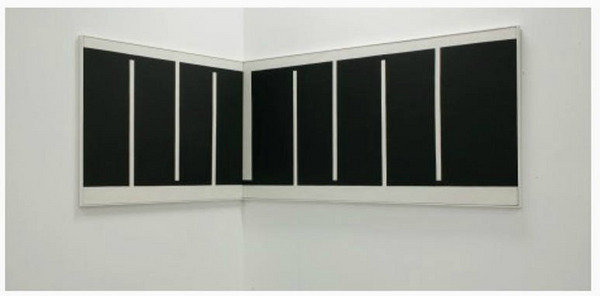Julije Knifer
dal 19/9/2014 al 5/12/2014
Segnalato da
19/9/2014
Julije Knifer
Zagreb Museum of Contemporary Art MSU, Zagreb
Uncompromising. A selection of key works from the MSU's in-house collection. In the art world Knifer is recognised by the geometric form of the meander, which he arrived upon in the early 1960s searching for the utter reduction of all expressive elements.

Exhibition curator: Radmila Iva Janković
Associate: Ana Knifer
Preparations are underway at the Museum of Contemporary Art for the mounting of the first retrospective exhibition of the work of Julije Knifer (Osijek, 1924 – Paris, 2004), an artist whose unconventional approach to the medium of painting marked the second half of the 20thcentury.
A selection of key works from the MSU's in-house collection will be joined at the exhibition with works borrowed from numerous private and public collections, including some of the world's leading collections of modern and contemporary art – New York's MoMA, Paris' Centre Georges Pompidou and Geneva's Mamco among others. Some of these works have never before been shown in Croatia. From the early 1970s to the late 1980s, namely, Julije Knifer often worked and exhibited in Germany, and moved to France in the early 1990s (Sète, Nice) where he would, having settled in Paris, remain the rest of his life. To be exhibited along with his early work preceding the meander are many drawings/sketches for paintings and murals, documentary photographs – including those of performances less widely known to the broader public, and his authentic (diary) notes – a verbal extension of the contemplation of human existence embodied in the symbol of the meander.
In the art world Julije Knifer is recognised by the geometric form of the meander, which he arrived upon in the early 1960s searching for the utter reduction of all expressive elements: "Within a few months I came, as it were, to the end, that is to a black & white painting (which I referred to as an anti-painting) – to a meander from which one simply cannot go further."
Striving to reduce expression to its simplest form early on, during his years of study at Zagreb's Academy of Fine Arts (1951–1957), in the adopted language of cubism, he moves from recognisable motifs in reality (landscapes, portraits) towards an entirely abstract expression. But everything that would later be reiterated in his work was presaged prior to his enrolment at the Academy in the Self-Portraits series, created in continuity over a number of years (1949–1952) as diary entries of sorts.
In the fine arts the winding meander of the river became a synonym for the eternal flow of life. Julije Knifer would, however, append to this archaic symbol his own, individual interpretations, posing complex questions concerning human existence through the simplest possible, but uttermost and antithetical visual tools. "It is likely that I have already created my final paintings, but the first – perhaps not." This thought, following the logic of the meander, is incessantly repeated in his notes from 1976, and offers us a key to a world in which chronology and continuity have no meaning.
Knifer's language of strict geometry constantly provoked classification into diverse trends in post-war art around the world (constructivism, minimalism, primary painting), opening a window from the early 1960s to his participation in major international exhibitions. Nevertheless, we find Knifer's actual spiritual origins in his affiliation with the neo-avant-garde group Gorgona (1959–1966) the members of which found their point of departure for unconventional artistic work in the philosophies of existentialism, absurdism and Zen, creating a platform for the new artistic phenomena that would become a reality a decade later.
Knifer's processual, utterly disciplined and almost ascetic approach to "radical will" would be expressed in its extremity in a series of meander drawings he began in the late 1980s – for months saturating the surface of paper with the trace of a graphite pencil, inscribing into it the temporal frame of his own existence.
Expert advisor: Professor Zvonko Maković PhD
Exhibition set up: Radmila Iva Janković, Ana Knifer
Space desing: Filip Kožarić
MSU main partner: Hrvatski telekom
Sponsors: Croatia osiguranje, Renault, Zaklada Adris, Kunsttrans, Galerie Frank Elbaz, Beck's
Partners of the exhibition: Museum of Fine Arts Osijek, Gallery of Fine Arts Split
The exhibition is organized under the high auspices of Ivo Josipović, President of the Republic of Croatia.
The exhibition and the catalogue have been realised with the support of the City of Zagreb Municipal Office for Education, Culture and Sport, and the Croatian Ministry of Culture.
Press contact:
Jadranka Pintarić +385 1 6052700 jadranka.pintaric@msu.hr
MSU – Museum of Contemporary Art
Avenija Dubrovnik 17 10000 Zagreb



